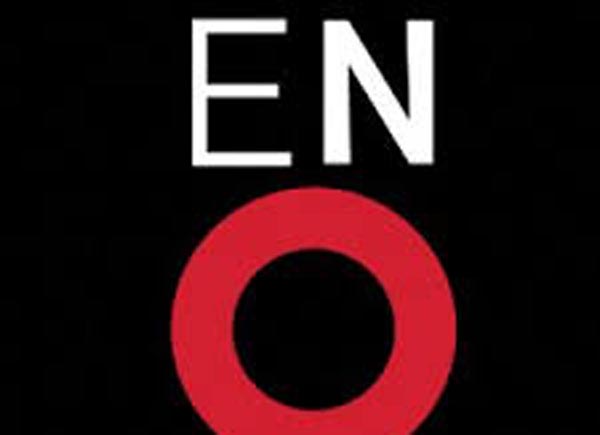The Gospel According to the Other Mary
John Adams. Directed by Peter Sellars
English National Opera
Mr Adams never likes to do the same thing twice and although he’s more melodic here than I’ve heard in a long long time, he’s also back to basics in his clarity and urgent purity of narrative thrust.
Director Peter Sellars also returns to direct this world stage premiere of Adams’s latest dramatic work, The Gospel According to the Other Mary. Using a text fashioned by Sellars from Biblical sources as well as several 20th-century writers (including Primo Levi), leading US composer Adams has created what Sellars describes as an attempt to ‘set the Passion story in the eternal present, in the tradition of sacred art’.
The Gospel According to the Other Mary is an interpretation of the Resurrection from the perspective of two women close to Jesus (Mary Magdalene and Martha), in which the narrative switches between the Biblical past and the worldly present, drawing parallels between Christ’s Passion and contemporary events such as the Arab Spring.
The first two acts were slightly too long for me, it was good, but not standout spectacular and the closing Passover scene made me roll my eyes a little. The second half, from its opening was grab-you-by-the-throat astonishing and I was caught up in the increasing tension immediately.
The disappointing set is drab, symbolic and unchanging (the poor are always with us…) although James F. Ingalls does some rather majestic subtle affects with the lighting and I was impressed.
Portuguese conductor Joana Carniero rammed the orchestra thought their paces, driving them to give it their all, a true Adams performance; full of the stillness and lurching expectancy of this music and then never letting the passion stop for a moment on the urgent climb through the heaving tumultuous, thunderous pounding events, spinning out to unexpected and wildly beautiful melodyies to the ethereal climax and finish. He and the orchestra were astoundingly good.
And then there’s Banks, the flex hip hop dancer who played the Angel Gabriel in a breath-taking performance which is improvised each night. His first time outside America, his first time on an opera stage; he was phenomenal and not more than a little distracting with this thick taught writhing muscles shining with sweat and his profound posturing.
His ‘duet’ with Patricia Bardon’s Mary Magdalene who sang as he held her tightly to his twisting thrashing body was otherworldly and I was quite moved by them. He occasionly slipped into something altogether too moonwalking and Urban for me, but then I’m a crusty old critic who should bust a fantastic young dancer a break and allow this kind of mashup to grow into something spectacular. I was pretty impressed by him for most of the Opera and having a non speaking Angel Gabriel allows the unpredictable physical interventions of these refulgent beings to be interpreted in an remarkable way.
Technically I would say this is far more oratorio than opera, but as the ENO chorus is beyond brilliant this evening it’s a matter of intellectual discussion. The chorus are all emotional passion, I often rave about the ENO Chorus, their precision, their details, this overwhelming commitment to the attitude and stance of the demands of the music, but tonight there were the best I have ever seen them. I was surprised, enchanted and profoundly moved by them they even managed to give a little dignity to the arm flapping insistence of the choreographer.
Their sibilant, muttering dark chorus which follows the crucifixion scene was quite disconcerting in its intense grief made more whispered and horrific by some surreptitious and interesting amplification. It stayed with me all the way home.
You can watch the Trailer here:
Russell Thomas as the voice of Lazarus was tone perfect, taking the rather poor material of the libretto and rising above the music to blend it all into something rather special. Without him I’d have been bored in the second act, he really was special.
Meredith Arwady‘s Martha felt the most grounded of all the characters and she thrilled the audience with her singing, utterly without mercy and nailing the emotional action each time she sang. There was no arguing with this Martha, she told it as it was, and an excellent contrast with Barton’s wide eyed and overwhelmed Mary.
The updating of Mozart’s three boys in ‘Seraphine’, played by the three counter-tenors: Daniel Bubeck, Brian Cummings and Nathan Medley was an ethereal treat, filing in part of the back story and allowing us a glimpse into the feelings of Jesus and the various Mary’s these three cemented the dislocate action together and had moments of brilliance.
Although not perfect this production is such an interesting blend of ancient and modern as to make it a must see. I left, slightly confused but feeling I’d seen something profound and more than a little in love with Banks.
To see Banks, the flex dancer, click here:
If you like John Adams or modern opera then book now! If you are interested in going along to see something new, modern but still accessible, understandable and moving then I would highly recommend this engaging production by the ENO, and if the music bores you a little, you can always float away with Banks and his vibrant, rhythmic angelic crumping away to some Hildegard of Bingan; not a sentence I get to write every day.
Be Quick, only two performances left, Wednesday and Friday!
For more info or to book tickets, click here:
Until December 5
London Coliseum
English National Opera
St Martins Lane
London





















You must be logged in to post a comment.